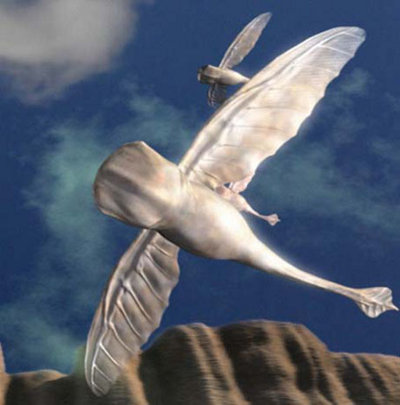"Flying Whales, Other Aliens Theorized by Scientists"I've seen the video: and it shows that some researchers are allowing themselves to think - if not outside the box, at least very close to the walls.
National Geographic News (June 3, 2005)
"One side of the planet is draped in eternal freezing darkness, the other side is bathed in permanent starlight.
"Fields of 'stinger fans'—animals that look like tall plants—cover the floodplains. Other strange species abound, from giraffe-like predators called gulphogs to tiny flesh-dissolving tadpoles known as hysteria.
"Welcome to the planet Aurelia.
"No, we haven't discovered life on another world—yet. But this could be what life on the fringes of our galaxy looks like, according to a group of scientists that contributed to the National Geographic Channel's special Extraterrestrial, which aired Monday, May 30.
"Alien life is not just possible but probable, according to many scientists. And thanks to new technology, we may not be too far from finding it.
"The question is: What can we expect to find?..."
Whatever is out there - assuming that life isn't limited to this 8,000-mile-wide ball of rock and metal we stand on - I think the one thing we can be reasonably certain of is that it won't be what we're familiar with. And, if there are people who aren't human, odds are pretty good that they won't
- Thrive on the the atmosphere we have at this point in Earth's history:
- 79% nitrogen
- 20% oxygen
- 1% other
- At just under 15 pounds per square inch pressure
- Be comfortable at about 57 degrees Fahrenheit
- Think that 32 feet per second per second is "normal" gravity
- Have biological cycles based on a
- 24 hour day
- 365-something day year
Bottom line for a science fiction/speculative fiction writer: outside space opera, space aliens who look like human actors in 'alien' suits may be rare birds, indeed.

(From National Geographic, used w/o permission.)
More:
- "Extraterrestrial"
National Geographic website
No comments:
Post a Comment
Thanks for your comment!